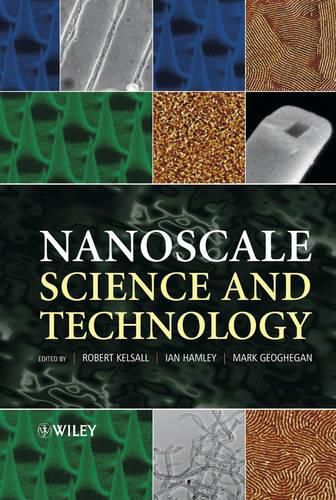Readings Newsletter
Become a Readings Member to make your shopping experience even easier.
Sign in or sign up for free!
You’re not far away from qualifying for FREE standard shipping within Australia
You’ve qualified for FREE standard shipping within Australia
The cart is loading…






Nanotechnology is a vital new area of research and development addressing the control, modification and fabrication of materials, structures and devices with nanometre precision and the synthesis of such structures into systems of micro- and macroscopic dimensions. Future applications of nanoscale science and technology include motors smaller than the diameter of a human hair and single-celled organisms programmed to fabricate materials with nanometer precision. Miniaturisation has revolutionised the semiconductor industry by making possible inexpensive integrated electronic circuits comprised of devices and wires with sub-micrometer dimensions. These integrated circuits are now ubiquitous, controlling everything from cars to toasters. The next level of miniaturisation, beyond sub-micrometer dimensions into nanoscale dimensions (invisible to the unaided human eye) is a booming area of research and development. This is a very hot area of research with large amounts of venture capital and government funding being invested worldwide, as such Nanoscale Science and Technology has a broad appeal based upon an interdisciplinary approach, covering aspects of physics, chemistry, biology, materials science and electronic engineering. Kelsall et al present a coherent approach to nanoscale sciences, which will be invaluable to graduate level students and researchers and practising engineers and product designers.
$9.00 standard shipping within Australia
FREE standard shipping within Australia for orders over $100.00
Express & International shipping calculated at checkout
Nanotechnology is a vital new area of research and development addressing the control, modification and fabrication of materials, structures and devices with nanometre precision and the synthesis of such structures into systems of micro- and macroscopic dimensions. Future applications of nanoscale science and technology include motors smaller than the diameter of a human hair and single-celled organisms programmed to fabricate materials with nanometer precision. Miniaturisation has revolutionised the semiconductor industry by making possible inexpensive integrated electronic circuits comprised of devices and wires with sub-micrometer dimensions. These integrated circuits are now ubiquitous, controlling everything from cars to toasters. The next level of miniaturisation, beyond sub-micrometer dimensions into nanoscale dimensions (invisible to the unaided human eye) is a booming area of research and development. This is a very hot area of research with large amounts of venture capital and government funding being invested worldwide, as such Nanoscale Science and Technology has a broad appeal based upon an interdisciplinary approach, covering aspects of physics, chemistry, biology, materials science and electronic engineering. Kelsall et al present a coherent approach to nanoscale sciences, which will be invaluable to graduate level students and researchers and practising engineers and product designers.